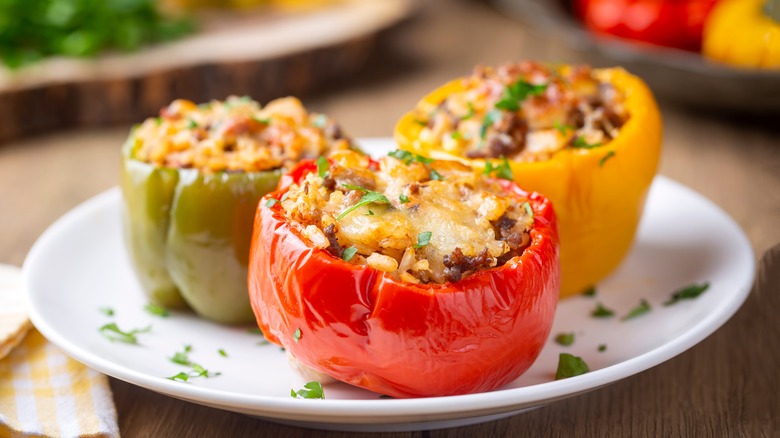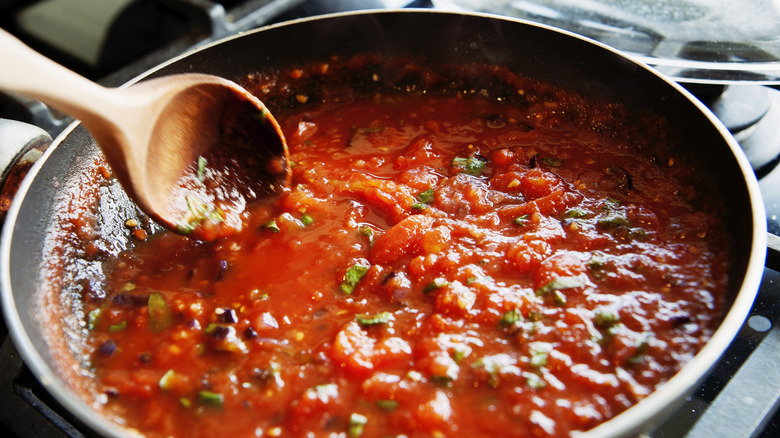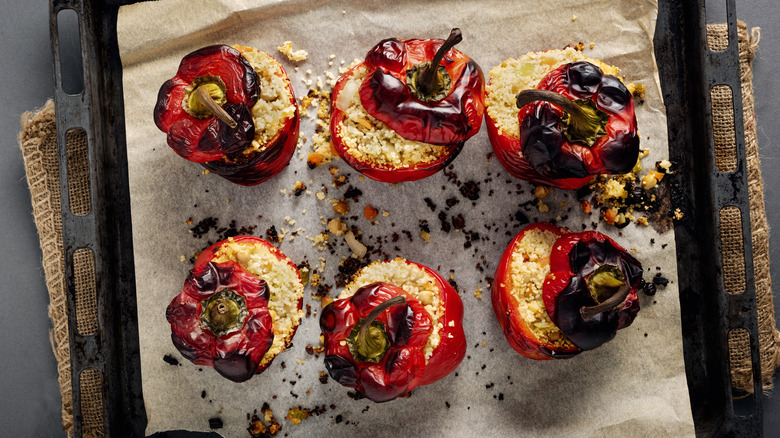Here's How To Prevent Soggy, Watery Stuffed Peppers
Hollowing out a vegetable and filling it to the brim with meat, cheese, and rice will never fail to elicit oohs and ahhs from dinner guests. Stuffed bell peppers, with their pretty range of primary colors, are particularly show-stopping. Their vibrant beauty and delicious filling make it all the more disappointing when they end up with a soggy texture. Fortunately, all it takes is a little forethought to master a tender yet firm stuffed pepper.
First and foremost, it's essential to precook your peppers. Bell peppers contain more than 90% water, much of which is released during the cooking process. If you cook your stuffed peppers in one fell swoop, that moisture will release and end up in the final dish. Give them a jump start and prevent them from falling apart by roasting them for a short time in a hot oven. Got that down? Here are some extra steps you can take for a perfect stuffed pepper.
No moisture in, no moisture out
Following the logic of precooking your peppers to safeguard against sogginess, you should also avoid watery ingredients in your stuffing. Let's say your filling calls for tomato sauce. Rather than spooning it directly into your hollowed peppers, reduce it on the stove until it's thick. Likewise, brown your meat first to allow it to release some of its moisture and fat before going into the pepper. Along those same lines, stuffed peppers are a perfect way to use up leftover rice or grains that have had a chance to dry out in the fridge, and they can absorb moisture from other ingredients during the cooking stage.
Want a nice cheese pull with each bite? Trade moist cheeses for low-moisture mozzarella and parmesan. For an even more fool-proof solution, skip the cheese in the filling and sprinkle it over the peppers in the last couple minutes of cooking — just enough time to top your peppers with a crunchy, golden-brown lid.
Cap it off with toppings
One of the hallmarks of a good stuffed pepper is a range of textures. The peppers themselves should be easy to cut with a knife but not too soft. The same goes for the fillings, which will soften up in the oven and steam inside the pepper. This is where toppings come in.
In addition to that bubbly cheese we mentioned, topping your peppers with a mix of crunchy, fresh, and creamy garnishes before serving is a great way to bring in ingredients that would sog up the dish if used as a filling. For freshness, reach for chopped tender herbs like parsley or cilantro. For crunch, fry up some shallots or give some breadcrumbs a quick toast in a skillet with garlic and spices. To round out the indulgence with creaminess and tang, serve the peppers with sour cream or labneh on the side. For an extra impressive presentation, cap the peppers off with their removed top portion.


